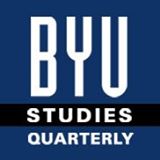BYU Studies Quarterly

Keywords
Mormon studies, book notice, New Zealand, missionary
Abstract
Writing Church history is an art form that has developed significantly in the last twenty years. Historical facts recited without reference to the spirit of revelation that guides the work of God in the last days can be spiritually sterile. However, a fearful focus on how certain materials might affect the faith of readers can damage the color and texture of any historiographical account. Often, the personal failings of the players in LDS religious history serve to underscore the Lord's hand in his work--as readers infer that it could not have worked out as it did but for divine influence.
Marjorie Newton's book Southern Cross Saints: The Mormons in Australia was the subject of criticism because some felt that it did not adequately address the faith of the members or the spirit of revelation that guided the work. But if that criticism was ever true of Newton's history of the Church in Australia, it would be unfair where this new work is concerned. Not only does she preface her work with the hope that this "simple yet inspiring story of the growth of Mormonism in New Zealand" will "convey a sense of the faith, courage and dedication of the North American missionaries, and . . . of their converts"(xiii), but she is direct in identifying examples that might not have been readily inferred by readers from her narrative. The unlikely assignment of Lieutenant Robert L. Simpson to Egypt during the Second World War is a case in point. She notes that despite an expectation that he might be assigned to the Pacific, he was assigned to Egypt at the exact time when the Maori Battalion that included many Latter-day Saints was stationed there. Newton concludes, "Truly, the Lord moves in mysterious ways, and one of His servants found himself able to serve both his country and his church in time of war" (215-16).
Recommended Citation
Thompson, A. Keith and Newton, Marjorie
(2013)
"Tiki and Temple: The Mormon Mission in New Zealand, 1854–1958,"
BYU Studies Quarterly: Vol. 52:
Iss.
2, Article 12.
Available at:
https://scholarsarchive.byu.edu/byusq/vol52/iss2/12
